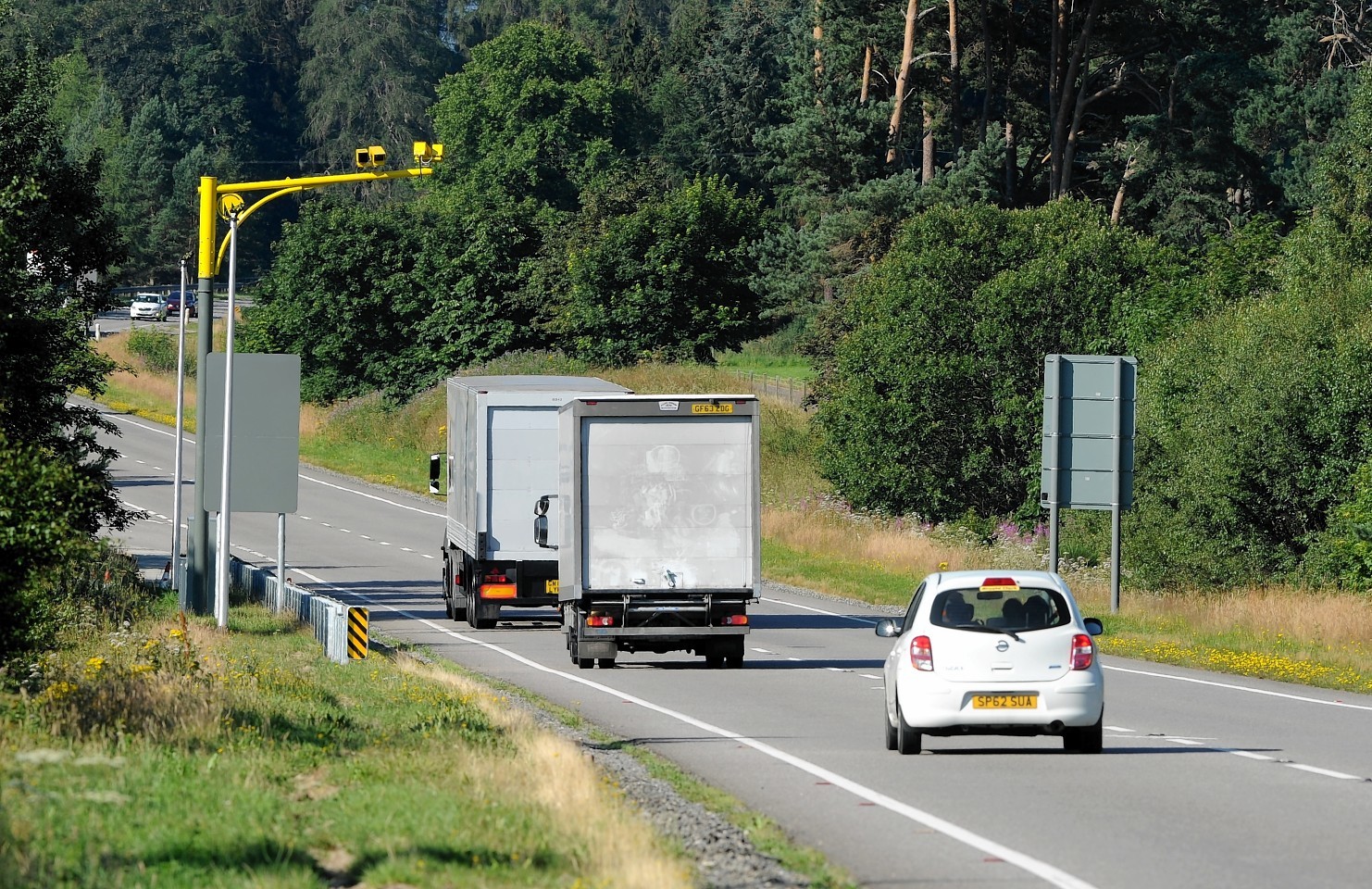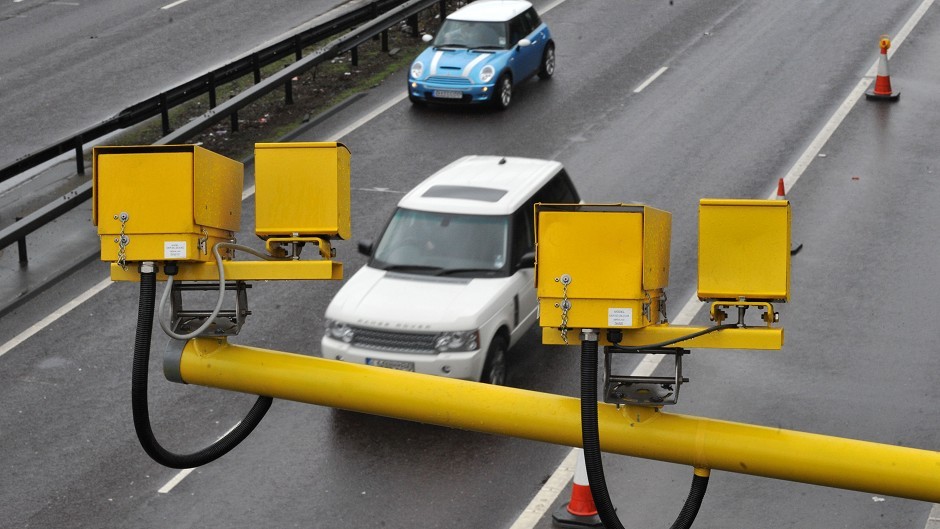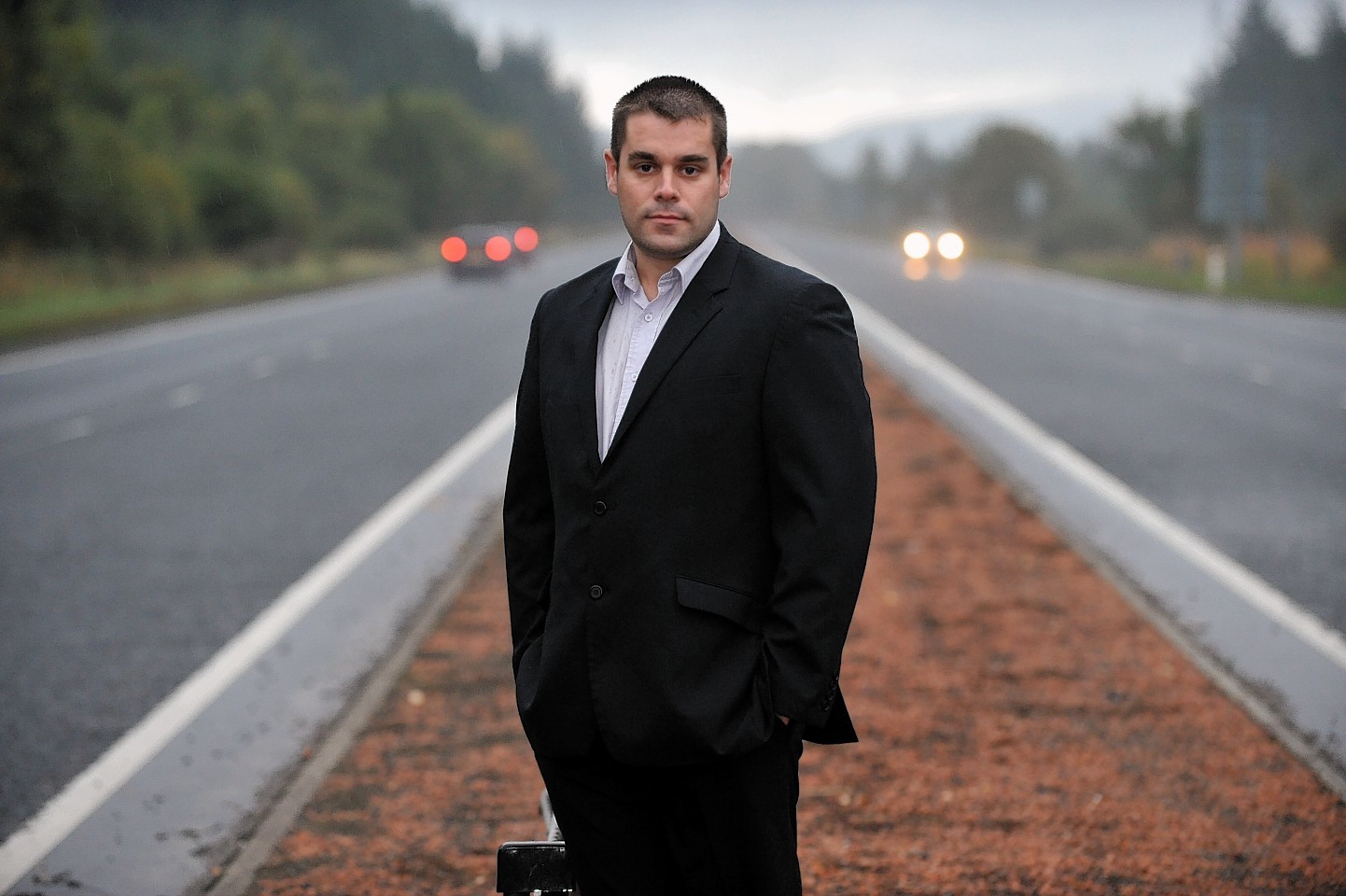New research has revealed more than half the motorists using the notorious A9 believe the controversial average-speed cameras have improved drivers’ behaviour.
And a similar number said the “yellow vultures” had made them more aware of how fast they are travelling on the key trunk route.
SNP ministers and roads agency Transport Scotland have faced fierce criticism since the £2.5million scheme was unveiled.
But a Press and Journal survey of 573 people living near the A9 found that only 13% felt there had been a negative impact on motorists’ behaviour since they were switched on in October.
Last night, however, a leading opponent of the cameras project urged caution – and predicted a summer of “chaos” on the route between Inverness and Perth.
Mike Burns, of A9 Average Speed Cameras are not the answer, said: “All current figures must be taken with a high degree of scepticism, based on the reality that traffic volumes have dropped almost every month since the cameras have been switched on.
“That is an absolute first for the A9 in recent history and winter traffic volumes on the A9 are currently running at 50% of the expected summer traffic volumes.”
Mr Burns added: “A slower road, with half the traffic volume and an increased journey time does not bode well for the summer chaos set to ensue.
“The traffic will increase by nearly 50% so I suspect when the journey times increase further, then people may reconsider their opinion.
“We always did say winter was a good launch time for Transport Scotland to try and build momentum in opinion, but was a bit of a phoney war as the real test is the summer when the accident rate was the highest anyway.”
The survey results were released following the publication of the statistics for the first three months of the cameras’ operation.
Transport Scotland’s figures, which were unveiled last month, showed that 298 offenders were the subject of “further action” by police from October-January – compared with 2,493 in the same period last year.
Overall incidents of speeding were slashed from one in three drivers last year to just one in 20 since the cameras were switched on in October.
And examples of excessive speeding – more than 10mph over limit – fell by 97%.
The level represents a drop from one in every 10 vehicles to one in every 250.
Journey times on the road for most motorists did increase as speeds dropped.
Drivers reported northbound trips between Perth and Inverness were taking about 11 minutes longer.
Stewart Leggett, chair of the A9 Safety Group, welcomed the new survey.
He said: “It is encouraging to see the Press and Journal readers polled broadly recognise the benefits of average-speed cameras and the positive effect they have on road safety.
“As reported last month, the early findings on speed, journey time and journey time reliability show the cameras are having a positive influence on driver behaviour.
“The A9 would be safer still if every driver observed the limits, that is why we will continue to monitor the road safety performance of this route and share our findings on the A9 Safety Group website.
“Speeding is only one behaviour and the group will be running further education campaigns on safer overtaking as well as working with the freight and haulage industry to address tailgating and ‘elephant racing’.
“Over the next two years we are committed to spending a further £18million on maintenance of the A9 to support even more safety improvements. This is additional investment, over and above the investment plans to dual the A9.”



